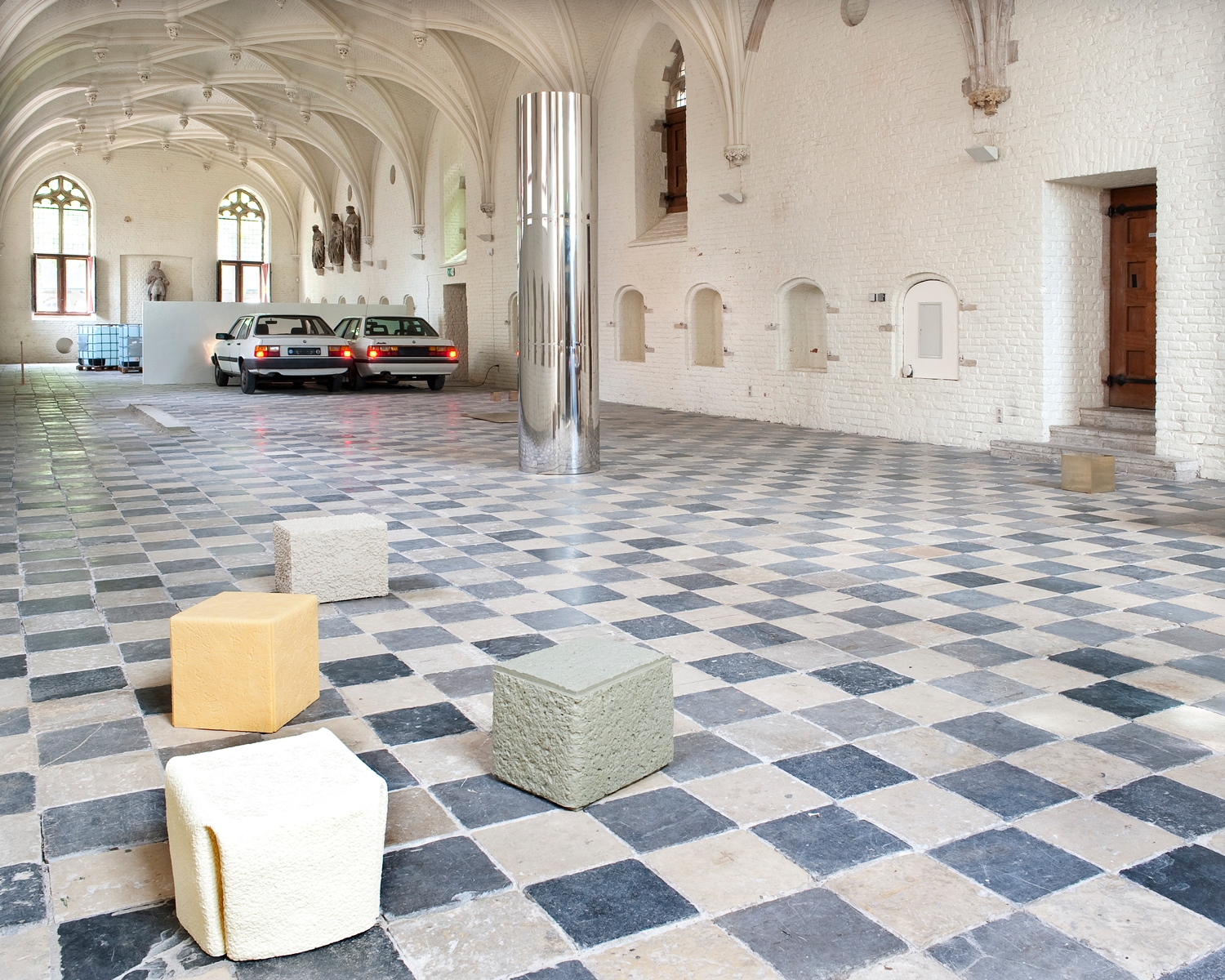Psychosculptures
Mandla Reuter, Rossella Biscotti, Kevin van Braak, Paolo Chiasera, Gert Robijns, Christoph Weber
Group exhibition
27 June – 12 September 2010
Vleeshal (Map)
Curator: Lorenzo Benedetti

Psychosculptures is an exhibition that explores a conceptual dynamic associated with attention to form and an aesthetic that reflects recent research in sculpture. The seven artists presented here use different artistic processes, but all see form as the outcome of a series of prior attitudes and dynamics – often invisible, inexplicable and absurd – which compel the viewer to move beyond the actual work. What lends the work added value is this very need to consider how far it has come in the course of its creation, and that this is what gives it validity. Seeing it as the end result of a wider process allows us to place it in a more complex space/time dimension.
Millions of tourists travel the world in search of new stories, images and places that are part of the collective imagination, destinations for pilgrimages and rituals. It is against this background that the German artist Mandla Reuter has used one of the most famous places in the world, the Trevi Fountain in Rome, as the starting point for his work. 5000 litres of water have been collected from the fountain and transported in industrial containers. The work raises questions about how such a famous place can be decontextualised by taking its contents elsewhere.
Rossella Biscotti and Kevin van Braak have together created a series of bronze sculptures in which the process of transformation from one form to another corresponds to a shift between two opposing ideologies. The four forms are a ‘translation’ of four monuments in Lithuania, to Lenin, Marx, Stalin and the Lithuanian heroine Melnikaitė. They weigh the same and are made of the same material; only the form has changed.
The Belgian artist Gert Robijns presents a work entitled Onverschillig/Indifférent. Two white Audis of the same model are parked side by side, opposite a wall in which there are two holes next to one of the cars. Light passes through them, illuminating the adjoining space. David Adamo’s imagination combines narrative elements in objects that have undergone physical changes as a result of violence or negligence. His works are often the remains of performances, actions that have left physical traces in materially destroyed objects.
The works presented by the Austrian artist Christoph Weber deal with the architectonic material elements of the facades. Every building has a skin that creates an identity present in our everyday life. Their shape reproduced, cast in wax and then forged into hermetic cubical elements. The surfaces stolen from the external environment function primarily as cut-outs from ‘local realities’, only to be forced into previously non-existent dimensions. In Untitled Baseline we find a primary structure of architecture characterised by the paradox between the strong material and the fragility of its condition.
Paolo Chiasera presents a painting entitled Black Brain 1, which was exhibited at the Rome Quadrennial and afterwards placed in a large cylinder of reflecting steel. The perfect shape of the cylinder is the final outcome of the other work concealed inside it – the shape thus refers to the principle of pure memory. External reality is reflected and made visible, while the contents of the cylinder are consigned to oblivion.
The works in the exhibition reveal only part of themselves, and require the viewer to believe in them – forms that relate metonymically to reality, parts that suggest the concealed, invisible remainder evoked by the actual sculptures, but open the door to further possibilities and potentialities in the work. The exhibition space is merely the starting point for a broader reality.